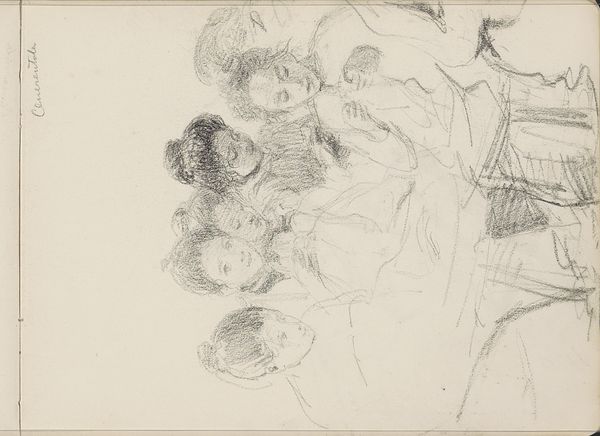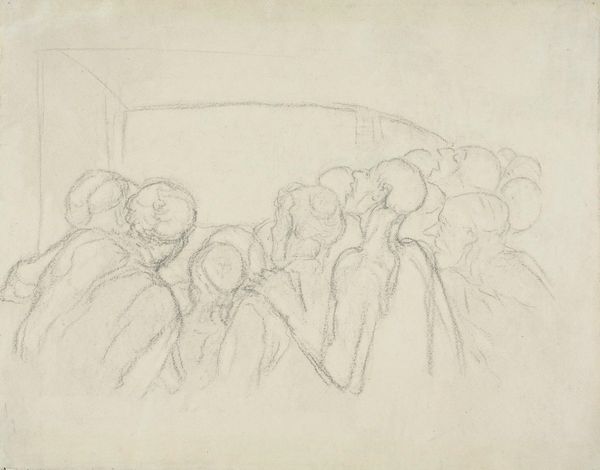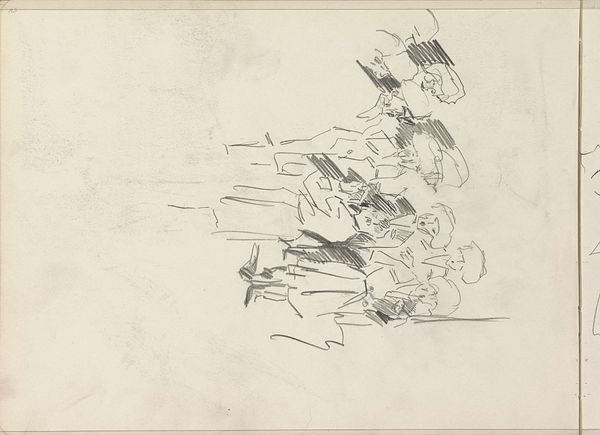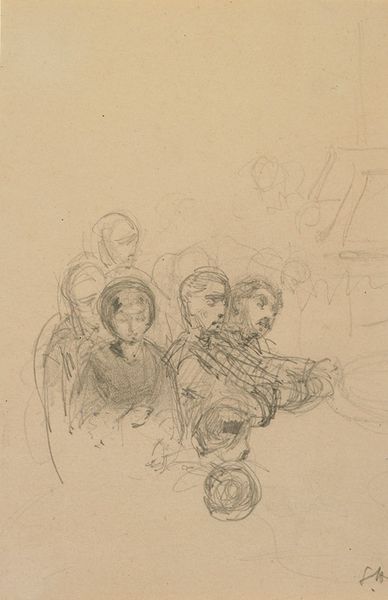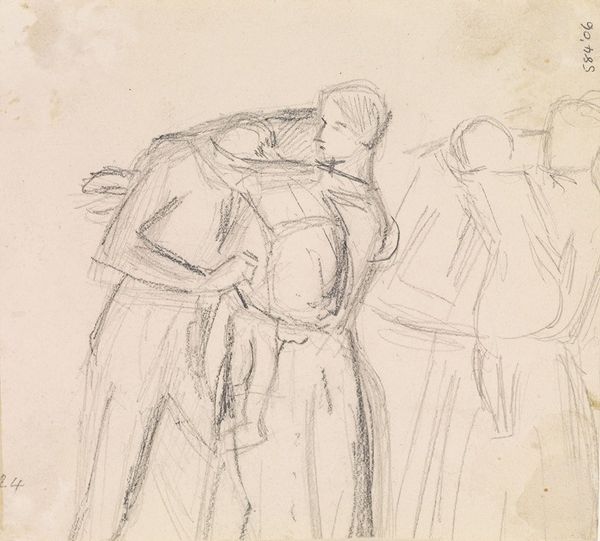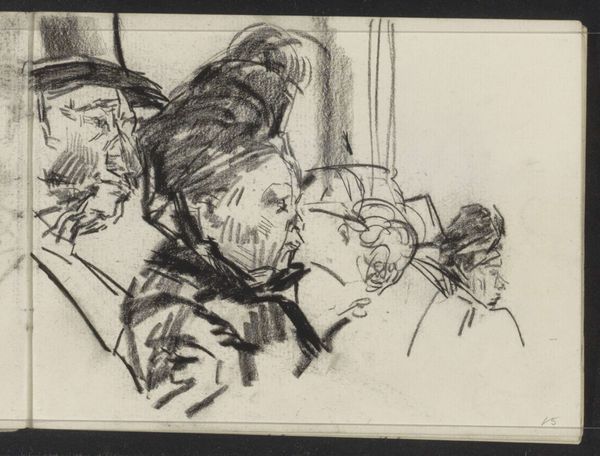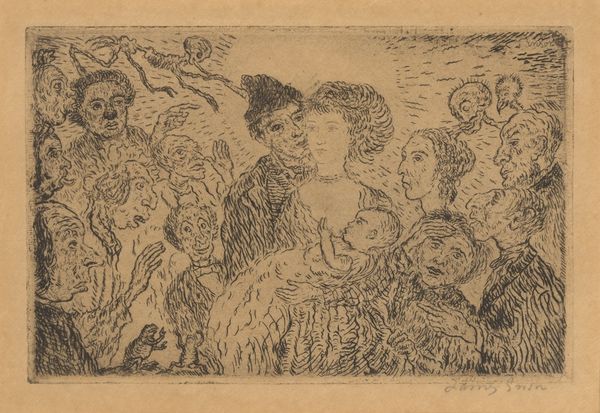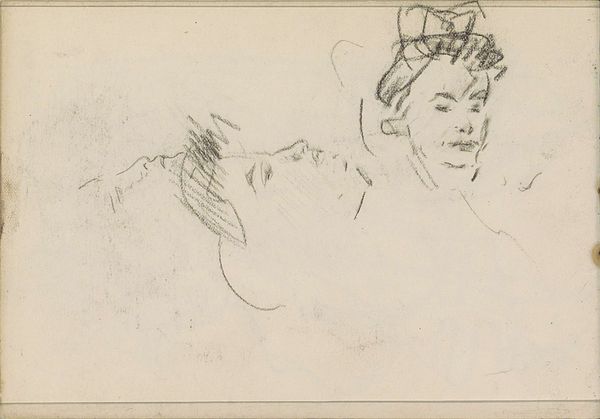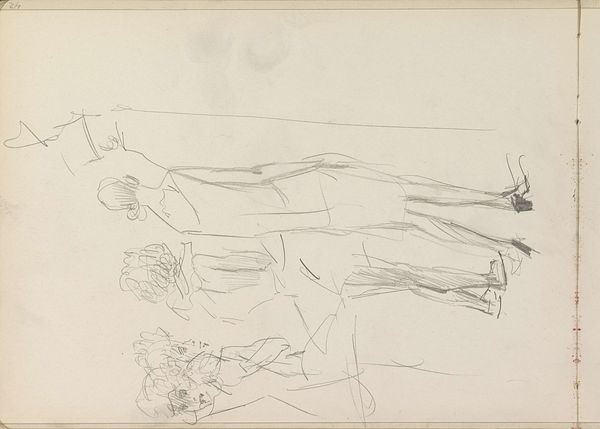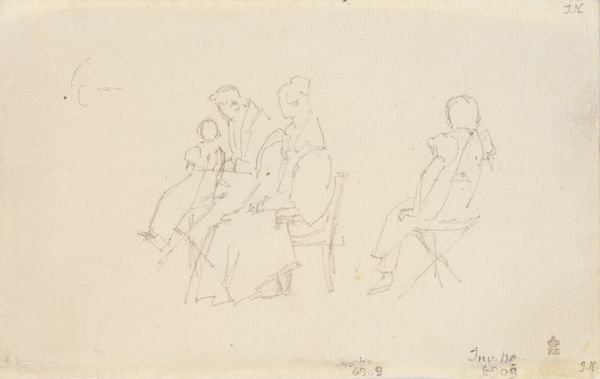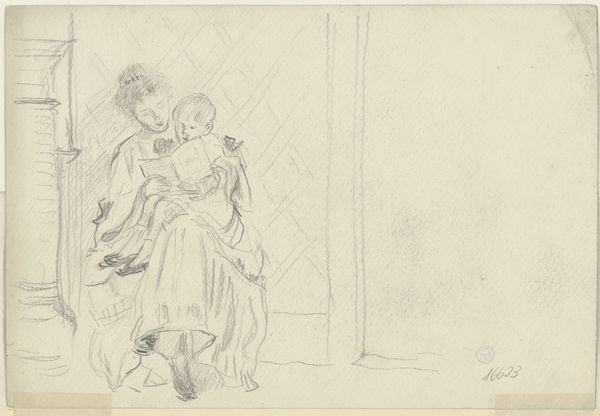
drawing, pencil
#
portrait
#
drawing
#
impressionism
#
figuration
#
pencil
#
portrait drawing
#
genre-painting
Copyright: Public Domain: Artvee
Curator: This is Edgar Degas' "Opera Boxes," a pencil drawing he made around 1877. It provides a fascinating glimpse into Parisian society during the Belle Époque. Editor: My initial reaction? It's surprisingly raw. You can really feel the artist's hand at work in the sketching—it has a sense of immediacy to it, despite being from so long ago. It gives me an access to this space in time that otherwise might seem foreign. Curator: Indeed, the rapid lines and unfinished quality give it an almost voyeuristic feel. The opera was a social institution as much as an artistic one, a place for observing and being observed. And the work exposes it well. Editor: And consider the labor embedded here. This isn't some grand oil painting taking years; it's a quickly realized sketch, indicative of a shift in artistic production. Think of the pencils themselves, the industrial processes required to make them, the mass consumption of art supplies opening to new venues like theatre and opera. Curator: Absolutely, and the subject matter also hints at class and social dynamics. Notice the male figures in the background compared to the central figures, who seem to represent a bourgeoise couple or a well-to-do duo perhaps. Editor: It's interesting to observe where he’s lavishing details and where he’s economizing labor; the woman’s dress receives far more careful strokes, emphasizing its material and texture. It looks as if she's got opera glasses, right? She wants to see and, more than that, she wants to *be* seen with expensive viewing tools in hand. Curator: Precisely! Degas, ever the social observer, captures that perfectly. He was interested in conveying how the structure of opera provided certain performative social possibilities, almost independent from the spectacle happening on the stage. The composition implicates a male gaze observing from one tier onto another tier occupied by a wealthy woman who, at the same time, gazes on other objects and people through opera glasses. Editor: Thinking about the labor involved really reshapes how we might initially view this elegant scene; from a simple pencil we've teased out issues of class, labor, material, production and gaze. Curator: This piece invites us to reflect on the social theater beyond the stage. Degas wasn’t simply recording a scene, he was revealing a network of relationships within a defined context. Editor: Precisely—and the physical work, that graphite on paper, anchors us to the actual conditions of the making of that depiction.
Comments
No comments
Be the first to comment and join the conversation on the ultimate creative platform.
